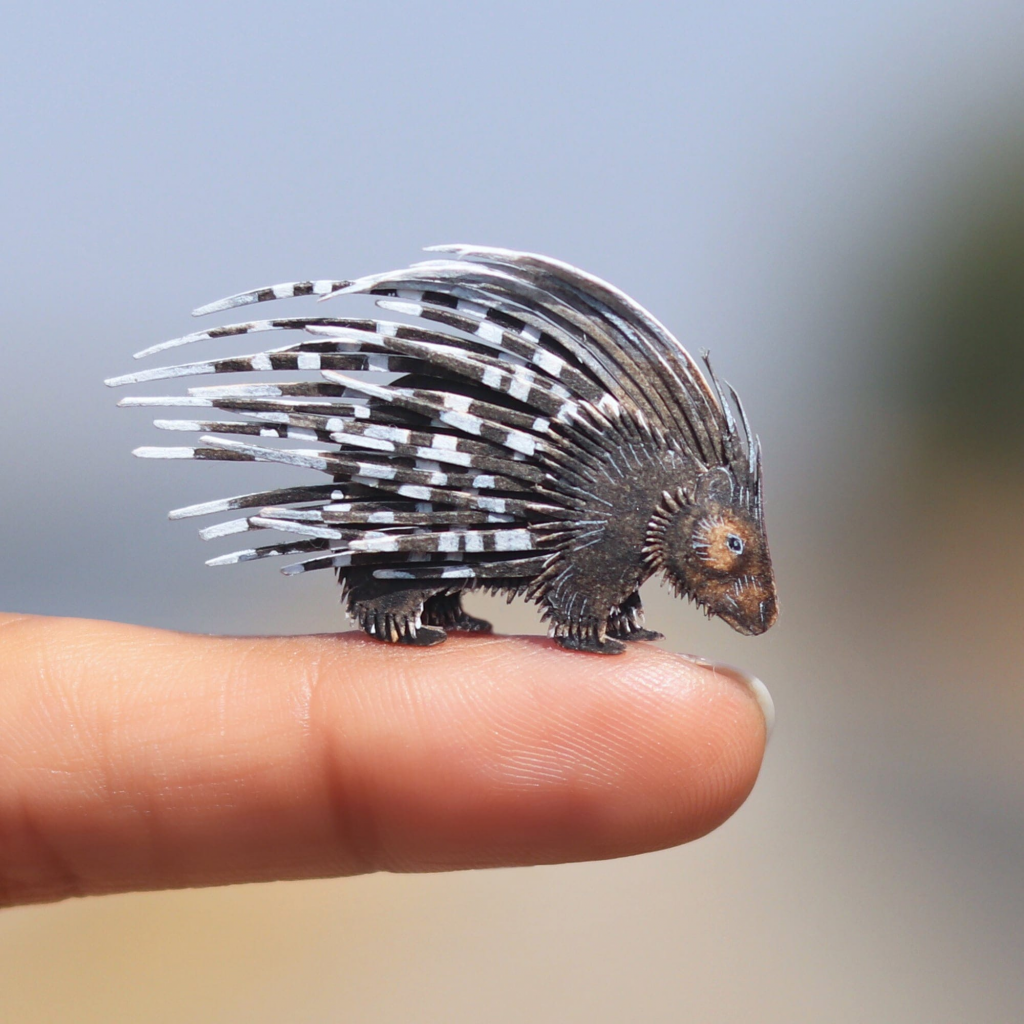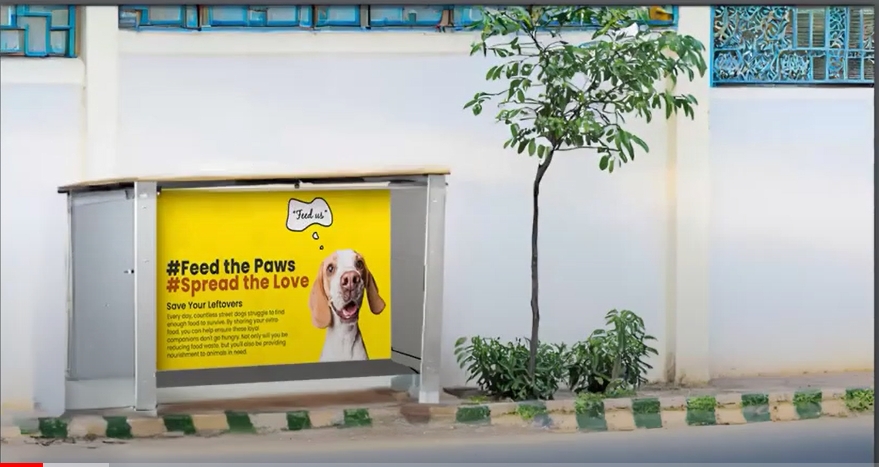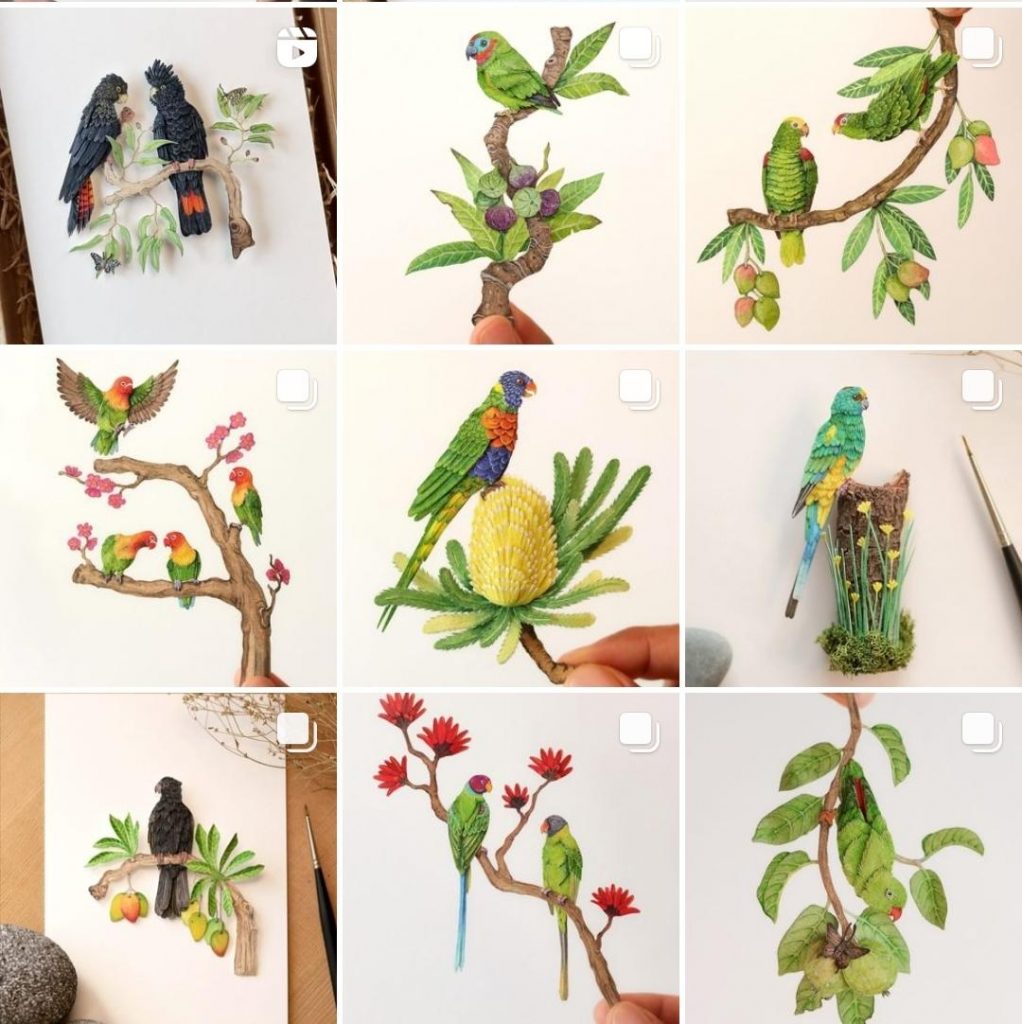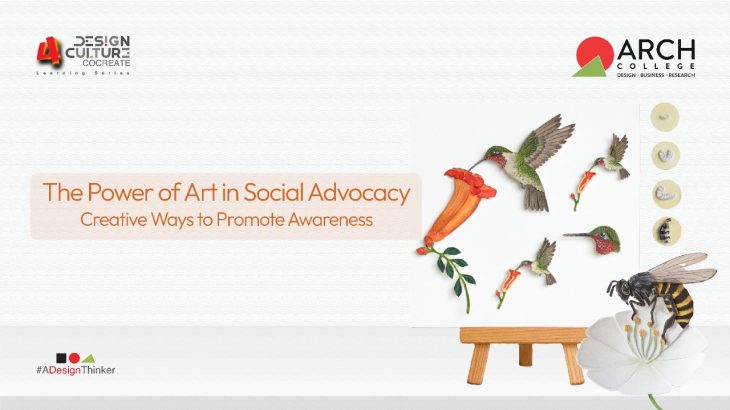Art has always mirrored society, capturing its beauty and flaws, but its influence extends far beyond mere reflection. Art can reshape perspectives, challenge societal norms, and drive real social change. In today’s digital world, where we’re constantly overwhelmed with information, the role of art in social advocacy has become more important—and effective—than ever. Art engages people emotionally and sparks conversations that might otherwise remain unspoken, offering an unparalleled tool for promoting awareness.
Recently, we had the privilege of hearing from Nayan and Venus during a Design Culture co-creative session. These artists create intricate miniature paper-cut art inspired by wildlife, raising awareness about endangered species. Their work highlights how art can play a pivotal role in social advocacy. In this post, we’ll explore creative ways that art and design can promote awareness, revealing how art uniquely connects with people and inspires change.
Why Visual Storytelling Hits Home
The saying “a picture is worth a thousand words” holds true for good reason. Visual art—whether it’s a painting, sculpture, or photograph—can instantly communicate complex stories and evoke powerful emotions. People process visuals much faster than text, and research shows that visual information is processed 60,000 times faster by the brain than written language. This makes art an incredibly powerful tool in raising awareness, especially when it comes to urgent social issues. In fact, studies indicate that people are more likely to retain and act on messages delivered through imagery than through written or spoken word alone.
Take Nayan and Venus as an example. Their 1,000-day project, which began in 2017, uses miniature paper-cut art to document endangered birds and animals. Their meticulous collaboration with wildlife photographers ensures their art is not only beautiful but also scientifically accurate, adding credibility to their advocacy. Through their work, they educate audiences about the importance of conservation, using art to foster empathy and understanding. Their project is a testament to how art can bridge the gap between aesthetics and activism, inspiring people to take action to protect endangered species.

Murals also serve as another powerful form of visual advocacy. These large-scale artworks are often found in public spaces, offering more than just a splash of color. Murals can communicate complex social messages, acting as reminders of the issues that need addressing. In cities like Los Angeles and Berlin, murals have long been a means of political commentary and activism. The use of public spaces ensures that these messages remain visible, keeping them in the public consciousness and sometimes even prompting action.
Interactive Art: A New Way to Connect
Interactive art takes advocacy to the next level by encouraging participation, making the audience an active part of the experience. Performance art, installations, and interactive design—whether through digital platforms or physical spaces—offer immersive experiences that make a lasting impression. Research suggests that interactive and participatory art can leave a deeper, more lasting impact on an audience because it engages them on multiple sensory levels.

A perfect example of this comes from one of our own student projects. The student designed a poster advocating for the care of street animals, and while it was a solid piece of work, Nayan suggested an addition that transformed it into something even more impactful. The suggestion was to set up visible feeding stations for street animals in public spaces, tying the poster’s message to direct community action. This shift from passive engagement (viewing a poster) to active participation (feeding animals) helps create a more tangible connection between art and advocacy. Interactive advocacy leaves people with a sense of involvement, which makes them more likely to stay engaged with the cause.
Social Media and Digital Art: Advocacy in the Digital Age
Social media is now one of the most powerful platforms for advocacy. With billions of users scrolling through their feeds daily, art shared on platforms like Instagram, Twitter, and TikTok can spread awareness quickly. Research shows that social media posts with visuals are 40 times more likely to be shared than those with just text, highlighting the importance of creativity in digital advocacy. Campaigns that incorporate art and design, especially ones that use digital tools like memes, illustrations, or short videos, can go viral and inspire action across a wide audience in a matter of hours.
Nayan and Venus have harnessed the power of social media to amplify their message about wildlife conservation. Their stunning paper-cut art, paired with thoughtful captions, has earned them a large, loyal following on platforms like Instagram. By consistently sharing their work and engaging with their followers, they have built an online community of people who care about conservation. Their profile, thepaperbark is an excellent example of how artists can use digital platforms to spread awareness, mobilize support, and inspire others to get involved in a cause.

Design: A Catalyst for Change
Throughout history, artists have used their art as a vehicle for social change. One of the most famous examples is Picasso’s Guernica, a painting that vividly depicts the horrors of war and continues to resonate today. More recently, street artist Banksy has used his work with an immediacy and wit, to comment on contemporary issues like consumerism and government surveillance, leveraging the accessibility of public spaces to start conversations that transcend traditional art galleries.
For design students, their approach serves as a reminder that art can be both a form of personal expression and a powerful tool for engaging the public on critical issues. Your art has the potential to do more than just express your individual style; it can spark conversations and inspire real change. Whether it’s a striking poster, a captivating digital illustration, or a powerful public installation, your designs can become powerful catalysts for advocacy. Think of your work as a form of visual rhetoric—persuading, engaging, and ultimately driving action through emotional connection. Studies have shown that emotional appeals in advocacy are often more effective than logical arguments, especially when coupled with strong visual storytelling.
Collaboration: Amplifying Impact Through Partnerships
Collaboration is essential in making advocacy art even more effective. When artists collaborate with professionals from other fields, they can create work that is both more meaningful and more impactful. Nayan and Venus’ collaboration with wildlife photographers is a great example of how interdisciplinary partnerships can enrich advocacy art. By working with experts in conservation, they ensure that their art is both scientifically grounded and visually compelling, adding authenticity to their message.
This collaborative approach can be applied to any advocacy project. For design students, partnering with experts in fields like environmental science, human rights, or public health can provide new insights that deepen the impact of their work. Research shows that interdisciplinary collaborations are more likely to engage diverse audiences because they incorporate a range of perspectives and expertise. Whether you’re advocating for social justice, environmental conservation, or another cause, collaboration can make your message stronger and more credible.

Conclusion
To summarise, Art and design are not just about creating beautiful things—they are powerful tools for communication, connection, and change. By creatively leveraging your skills, you have the potential to contribute to the most important conversations of our time. Whether through visual storytelling, interactive installations, digital art, or collaborations, your work can inspire awareness, empathy, and action. Art has always been a catalyst for change, and in today’s world, its role in social advocacy is more critical than ever.
